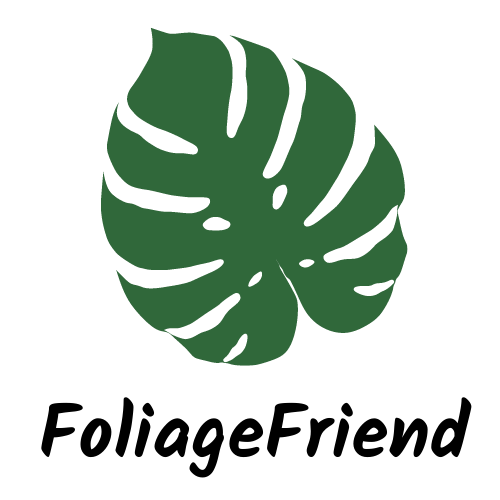Peperomia plants are popular houseplants known for their beautiful foliage and easy maintenance. They come in a variety of shapes, sizes, and colors, adding a touch of elegance to any indoor space. However, sometimes the plants may look a bit sparse and not as bushy as one would like. In this article, we’ll share some simple steps to help you make your peperomia bushier and more attractive.
The key to achieving a lush, bushy peperomia is providing the right conditions for optimal growth. This includes proper soil, watering, and light conditions, as well as regular pruning and propagation. By mastering these elements, you will be able to encourage your peperomia plant to become fuller and healthier.
In the following sections, we will delve into the specific ways you can help your peperomia thrive, from choosing the right soil to proper pruning techniques. With a little attention and care, you can enjoy a vibrant, bushy peperomia that adds a natural charm to your indoor environment.
Why Peperomia Needs Regular Pruning
Peperomia plants often need regular pruning to maintain their attractive appearance and prevent them from becoming too leggy or droopy. Pruning not only helps peperomia plants stay bushy and compact, but it also contributes to their overall health, encouraging new growth and reducing the risk of pests or diseases.
One of the main reasons to prune your peperomia is to help maintain a bushy shape. When left unpruned, the leaves can grow larger and heavier, causing the plant to look droopy. Regularly trimming the plant during the spring season can help improve its appearance and keep it looking vibrant [^1^].
In addition, pruning can stimulate new growth by removing any old or damaged leaves which may be taking vital resources away from the healthy parts of the plant. This can help the peperomia grow more evenly, preventing legginess and keeping the plant from appearing “overgrown”.
Another important aspect of pruning is to maintain the plant’s overall health. By removing dead or dying leaves, you reduce the chances of fungal infections, pests, or other issues that can weaken the plant. This prevents any potential problems before they escalate, ensuring your peperomia remains healthy and beautiful.
Lastly, regular pruning can lead to a more efficient use of resources. Since Peperomia plants don’t have a large root system, they need to be able to absorb water and nutrients efficiently. By limiting the plant’s size through pruning and removing unnecessary foliage, resources are better allocated, promoting a healthy and bushy peperomia.
To summarize, regular pruning is essential in maintaining peperomia health and appearance. It helps maintain a bushy shape, stimulates new growth, prevents potential problems, and promotes efficient resource use.
Ideal Time for Pruning Peperomia
When it comes to pruning your peperomia plant for a bushier appearance, timing plays a crucial role. The ideal period for pruning is during the spring season, as it allows the plant to maximize its growing potential and recover from the pruning process more efficiently.
During winter and fall, peperomia plants are at their weakest, with fragile roots and stems. Pruning in these seasons can stress the plant and hinder its growth. Therefore, it is best to avoid any pruning during these months.
When you decide to prune your peperomia, here are some steps to follow:
- Gather the necessary tools such as sharp pruning shears and garden gloves.
- Ensure your pruning shears are disinfected to minimize the risk of infection.
- Do not prune more than 20-25% of the plant at once, as this can stress the peperomia.
When pruning, follow these techniques:
- Hold the pruning shears at a 45-degree angle for a clean cut.
- Focus on removing leggy stems or unhealthy growth first.
- Trim back the tips of the plant to encourage bushiness and new growth.
After pruning, it’s essential to water your peperomia thoroughly to reduce stress and help it recover more quickly. Throughout this process, use a gentle touch and avoid damaging the healthy parts of the plant.
Remember, proper pruning in tandem with other peperomia care practices, such as providing adequate sunlight, humidity, and watering, will contribute to a healthier, bushier plant.
Tools Needed for Pruning
Before starting the process of pruning your peperomia to make it bushier, it’s essential to have the necessary tools at hand. In this section, we’ll discuss the two primary tools you’ll need: hand pruners and rubbing alcohol.
Hand Pruners
Hand pruners are an essential tool for pruning peperomia plants. They allow for clean, precise cuts that promote healthy growth and prevent damage to the plant. When choosing hand pruners, opt for a pair that has sharp, stainless steel blades. This ensures that your cuts will be clean and won’t introduce any diseases or infections to your peperomia. Additionally, it’s a good idea to choose a pair with comfortable, ergonomically designed handles to make the pruning process as effortless as possible.
Rubbing Alcohol
Another crucial tool for the pruning process is rubbing alcohol. Rubbing alcohol serves as a disinfectant, ensuring that your hand pruners are clean and free of harmful bacteria before and after pruning. This is especially important since pruning creates open wounds on the plant, which can be susceptible to infection if not properly disinfected.
To use rubbing alcohol for disinfecting your hand pruners, follow these simple steps:
- Pour a small amount of rubbing alcohol onto a clean cloth or paper towel.
- Thoroughly wipe down the entire blade of your hand pruners, ensuring that it is free of dirt and debris.
- Allow the rubbing alcohol to air-dry for a few moments before using the pruners on your peperomia plant.
Following these steps helps to ensure that your peperomia stays healthy and infection-free throughout the pruning process. By preparing the necessary tools and taking the appropriate precautions, you’ll be well on your way to creating a bushier, more beautiful peperomia.
Step-By-Step Guide to Make Peperomia Bushy
Inspect the Plant
The first step in making your Peperomia bushy is to inspect the plant. Observe its overall health, looking for any signs of damage or disease. If you find unhealthy parts, you will need to address those issues before moving on to the next steps.
Prune Damaged or Diseased Stems
After thoroughly inspecting your Peperomia, use clean and sharp pruning shears to remove any damaged, diseased, or dead stems. This will encourage new, healthy growth and help maintain the overall health of the plant. As a general rule, it’s best to cut about a quarter-inch above a healthy, outward-facing leaf node.
Trim Leggy Stems
To promote bushier growth, trim leggy or overgrown stems, also called apical pruning. This will encourage the plant to branch out and create a fuller, more compact shape. Simply cut back the stem to the desired length, ideally just above a leaf node.
Pinch off Growing Tips
Pinching off the growing tips of your Peperomia is another technique to encourage bushier growth. Gently pinch or cut off the new growth at the tip of the stem, which in turn will stimulate lateral growth, creating a fuller appearance. Regular pinching will help maintain the desired shape of your Peperomia.
In addition to these steps, make sure your Peperomia receives enough light and proper watering practices to maintain its health and appearance. By consistently monitoring your Peperomia and following these steps, you can enjoy a beautifully bushy and healthy plant.
Additional Tips for Bushy Peperomia
In this section, we will discuss some additional tips to help your peperomia become bushier and healthier. These sub-sections cover proper watering, appropriate lighting, fertilizing correctly, and rotating the plant.
Proper Watering
Watering peperomia plants correctly is essential for their growth and bushiness. It’s crucial to monitor the soil’s moisture and only water the plant when the top 1-2 inches of soil feel dry to the touch. Overwatering can lead to root rot, while underwatering can cause the plant to lose its leaves. Make sure to use a well-draining soil mix to prevent excess moisture around the roots.
Appropriate Lighting
To encourage bushy growth, place your peperomia in bright, indirect light. A location near an east or west-facing window often works well. Direct sunlight may scorch the leaves, while inadequate light can lead to leggy growth. If you don’t have access to sufficient natural light, consider using a grow light to supplement the light your plant receives.
Fertilize Correctly
Feeding your peperomia with an appropriate fertilizer can encourage bushy growth. Use a balanced, water-soluble fertilizer, diluted to half strength, every four to six weeks during the growing season. Excessive fertilizer may promote leggy, weak growth while inadequate nutrients can stunt your plant’s development. It’s important not to over-fertilize, as this can cause more harm than good.
Rotate the Plant
To ensure even growth and maintain bushiness, it’s essential to rotate your peperomia regularly. This allows all sides of the plant to receive adequate light, promoting fuller, more symmetrical growth. Rotating your plant once every few weeks will help achieve a bushier appearance.
By following these additional tips on proper watering, lighting, fertilization, and rotation, you are on your way to promoting bushy and healthy growth in your peperomia. Enjoy watching your plant thrive and become fuller as you apply these techniques to its care.
Helpful Video

My name is Daniel Elrod, and I have been houseplant love ever since I was 17. I love how much joy they bring to any room in the home. I’ve always been amazed at how a few pots of flowing leaves can turn a drab and sterile office into an inviting place where people love to work at.










































































































































































